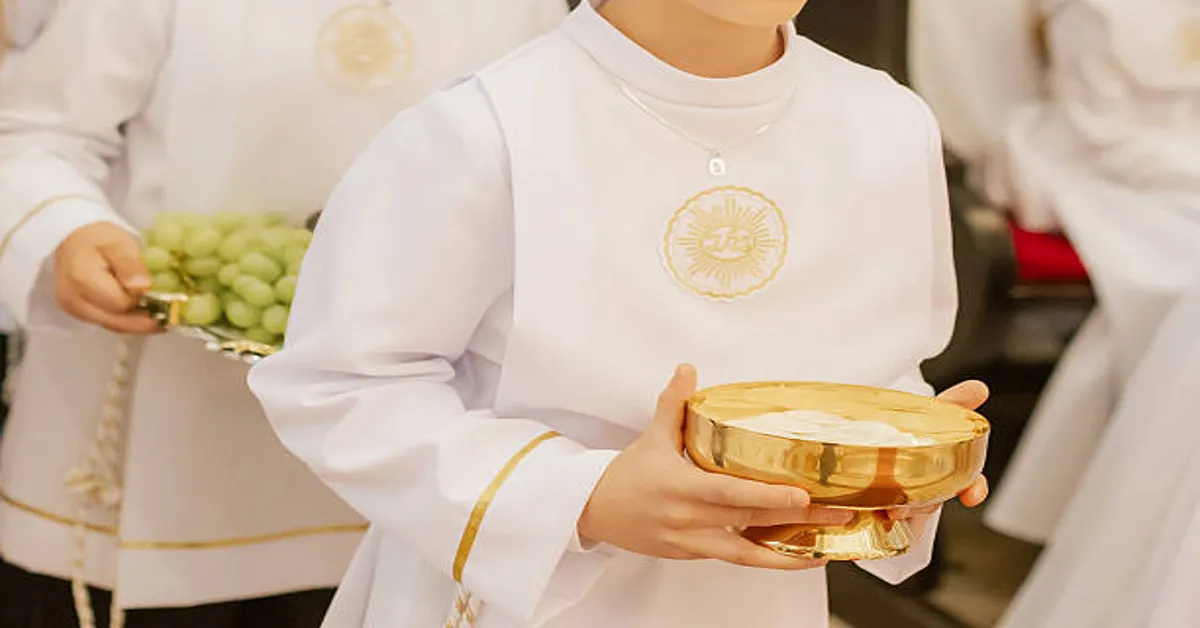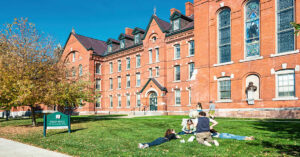First Communion is one of the most significant milestones in the spiritual journey of a Christian child. Rooted deeply in faith, symbolism, and tradition, this sacred occasion is celebrated primarily within the Roman Catholic Church and other Christian denominations such as Anglican and Lutheran traditions. It is often the first time a child receives the Eucharist, which Catholics believe is the body and blood of Christ under the appearance of bread and wine. For families, this moment is not just a religious ceremony but also a cultural and social event filled with joy, anticipation, and togetherness.
The importance of First Communion lies not only in the liturgical act but also in its role in shaping the child’s spiritual growth, values, and relationship with God. Parents, godparents, and communities take part in nurturing this stage, ensuring that the child is spiritually prepared and understands the solemn meaning of receiving Christ. The ceremony often involves months of preparation, catechism classes, confession, and learning prayers. It culminates in a beautifully organized Mass, followed by celebrations that reflect cultural traditions.
This article will explore the meaning of First Communion, its history, preparation process, symbolism, attire, prayers, cultural variations, and modern practices. Families preparing for this sacred occasion will find detailed insights, examples, and even practical tips on how to guide children through this important milestone.
The Meaning and Spiritual Significance of First Communion
First Communion is essentially a child’s first reception of the Holy Eucharist. In Catholic theology, the Eucharist is not just symbolic bread and wine; it is believed to be the real presence of Jesus Christ. This is a cornerstone of Catholic belief, often referred to as transubstantiation. Thus, the moment when a child receives Communion is seen as an intimate union with Christ.
For a child, this event represents a deeper integration into the faith community. Baptism is considered the first sacrament of initiation, but First Communion deepens that initiation by allowing the child to partake fully in the liturgy of the Mass. The act of receiving the Eucharist emphasizes themes of sacrifice, thanksgiving, forgiveness, and unity with God.
On an emotional and cultural level, First Communion also serves as a rite of passage. It teaches children responsibility, reverence, and the importance of prayer. Families see it as a moment of pride and joy, as it reflects not only the child’s growth in faith but also the family’s commitment to passing down religious traditions.
Historical Background of First Communion
The practice of First Communion dates back centuries. In the early Church, children were sometimes baptized and immediately given Communion, but over time, as catechetical preparation became more structured, the practice shifted. By the 13th century, the Church began to require that children reach the “age of reason” (around seven years old) before receiving the Eucharist.
In 1910, Pope Pius X encouraged lowering the age of First Communion from around 12 to 7, emphasizing the importance of children’s early connection to the Eucharist. His decree, Quam Singulari, stated that children could begin to receive Communion once they could distinguish between ordinary bread and the consecrated Eucharist, showing sufficient understanding of its sacred nature.
Today, most Catholic children celebrate First Communion around the ages of 7 to 9, though variations exist depending on cultural customs and denominational practices.
Preparation for First Communion
Preparation for First Communion is a structured process that combines religious education, spiritual practice, and personal readiness. Parents, catechists, and parishes all work together to ensure that children are well-prepared for the sacrament.
Catechism and Religious Education
Children typically attend catechism classes for one or two years before their First Communion. These lessons cover the basics of Catholic faith, the meaning of sacraments, the importance of prayer, the Ten Commandments, and especially the Eucharist. The classes aim to foster a love for Christ and help children understand the depth of the sacrament they are about to receive.
Confession or First Reconciliation
Before receiving First Communion, children are usually required to make their first confession, known as the Sacrament of Reconciliation. This step helps them understand the importance of forgiveness, repentance, and being in a state of grace before receiving Christ. It also teaches the values of honesty, humility, and reconciliation with God and others.
Parental Role
Parents are the primary faith educators of their children. Beyond formal classes, families are encouraged to nurture prayer at home, attend Mass regularly, and talk about the meaning of faith in daily life. Parents often attend meetings organized by the parish to help them guide their children better.
Retreats and Spiritual Exercises
Some parishes organize retreats or special days of reflection before First Communion. These experiences immerse children in prayer, storytelling, crafts, and liturgical practices, making the preparation both spiritual and memorable.
The First Communion Ceremony
The ceremony of First Communion is usually celebrated during a Sunday Mass, often in springtime. It is a public event where several children receive the Eucharist together, surrounded by family, friends, and parishioners.
Structure of the Ceremony
- Entrance Procession: Children may enter in a procession, often dressed in white attire, symbolizing purity and new life.
- Readings and Homily: The Mass follows the usual structure, but the priest often tailors the homily to children, emphasizing themes of love, sharing, and presence of Jesus.
- First Eucharist: At Communion time, children approach the altar to receive the Eucharist for the first time. This moment is often accompanied by emotional music, photography, and the blessing of families.
- Final Blessing: The priest may offer a special blessing for the children and their families, marking the completion of this milestone.
Reception and Celebration
After the Mass, it is customary to hold a family gathering or reception. Food, cake, and gifts are often part of the celebration. The reception emphasizes joy, gratitude, and community spirit.
Symbolism in First Communion
The symbols associated with First Communion enrich the ceremony and provide tangible expressions of faith.
| Symbol | Meaning |
|---|---|
| White Garments | Purity, innocence, and new life in Christ. |
| Rosary | Prayer and devotion, often gifted to the child. |
| Bible or Prayer Book | Spiritual nourishment and guide for faith. |
| Chalice and Host | The Eucharist as the body and blood of Christ. |
| Candles | Light of Christ guiding the child’s journey. |
Attire for First Communion
Attire plays an important role in the visual and cultural aspects of First Communion.
- Girls: Traditionally wear white dresses, veils, and sometimes gloves. The white symbolizes innocence and echoes baptismal garments. Many dresses are simple but elegant, while some cultures emphasize elaborate attire.
- Boys: Commonly wear suits, ties, or sometimes white shirts with dress pants. Some parishes encourage uniformity by suggesting specific styles.
- Cultural Variations: In some countries, children wear traditional or regional attire alongside or instead of western-style clothing.
Gifts and Keepsakes
First Communion gifts are meaningful tokens that reinforce faith and spirituality. Popular gifts include rosaries, prayer books, Bibles, religious medals, crucifixes, and personalized keepsakes like engraved photo frames or jewelry. These gifts are not only celebratory but also serve as reminders of the child’s spiritual journey.
Cultural and Regional Traditions
Different cultures bring unique customs to First Communion:
- Latin America: Families often host large receptions with music, traditional food, and extended family gatherings.
- Ireland: First Communion is both a religious and cultural highlight, marked by elaborate celebrations and symbolic photographs.
- Philippines: The event is highly communal, often celebrated alongside parish feasts and processions.
- United States: While celebrations vary, many families emphasize photography sessions, formal receptions, and keepsakes.
Challenges and Modern Perspectives
In modern times, First Communion faces both challenges and evolving practices. Some critics argue that celebrations can become overly materialistic, with too much focus on clothing, parties, and gifts rather than the sacrament itself. Churches often emphasize simplicity and encourage families to focus on faith rather than extravagance.
Additionally, with increasing secularization in some regions, fewer families participate actively in parish life. This has made catechism preparation more challenging for parishes. However, many communities are finding new ways to engage children through digital resources, interactive retreats, and family-oriented programs.
Conclusion
First Communion is a profound milestone in the spiritual and cultural life of Christian children and their families. Beyond being a single day of celebration, it represents a child’s step into deeper participation in the life of the Church and a closer relationship with Christ. Preparation, prayer, and family involvement are essential to making this event meaningful. By focusing on the sacrament’s true essence rather than material aspects, families can ensure that children cherish this sacred moment for life.
FAQs on First Communion
1. At what age do children typically receive First Communion?
Most children receive First Communion around the ages of 7 to 9, considered the age of reason, when they can distinguish the Eucharist from ordinary bread.
2. Do children need to go to confession before First Communion?
Yes, children usually make their First Reconciliation or confession before receiving the Eucharist. This prepares them spiritually by cleansing them of sin.
3. What should children wear for First Communion?
Girls often wear white dresses and veils, while boys wear suits or dress clothes. Attire symbolizes purity and reverence.
4. What are suitable gifts for First Communion?
Religious gifts like rosaries, prayer books, Bibles, medals, or keepsakes are traditional, as they help children grow in faith.
5. How do families usually celebrate after the Mass?
Celebrations often include receptions with food, cake, and gatherings of relatives and friends. The focus is on gratitude and joy.









